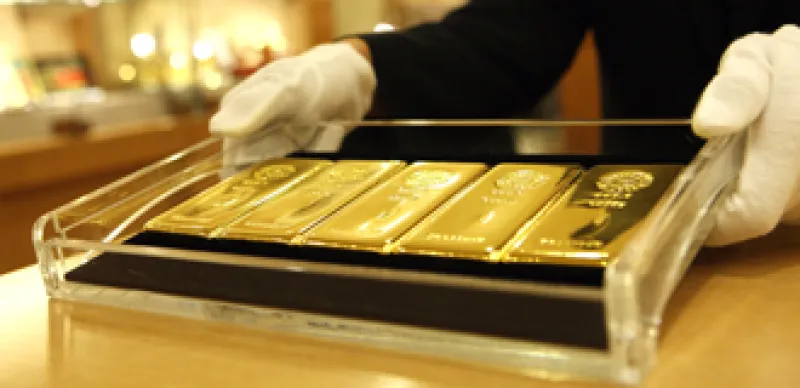The price of gold barreled above $1,500 an ounce last week. It was a nominal record, although in inflation-adjusted terms the price of the metal still lags the super-rally of the early ‘70s. That notwithstanding, the price of gold has been on a tear, and for quite a long time. The price of the precious metal is up 5.8 percent this year, extending 10 successive years of gains, including a 30 percent surge in 2010.
Whether the price of gold will continue its upward movement is a matter of intense debate and passionate feeling among investors. And even if the price of gold continues to rise, is the precious metal necessarily the best hedge in a time of rising inflationary fears? One strategist says the risks are toward the downside.
“At $1,500, gold's valuation looks just about as stretched to the upside as global real interest rates do to the downside,” says Vincent Childers, a real asset strategist at money manager AllianceBernstein.
Gold enthusiasts say the metal is a commodity like no other, and provides a unique level of protection against inflation, which eats away at the value of many other assets.
“Our research makes clear that to achieve true diversification an allocation to an outright position in gold provides benefits that cannot be replicated simply by investing in a wider commodities basket,” says Juan Carlos Artigas, investment research manager at the World Gold Council (WGC). “Gold should be viewed as a separate, distinct asset class, and a foundation to a well diversified investment portfolio,” Artigas says.
The WGC maintains that “during the period between October 2007 and March 2009 — the height of the global financial meltdown — an investor with a portfolio of $10 million experienced an additional $500,000 financial loss simply by not maintaining a position in gold.” The trade group says an 8.5 percent allocation to gold reduced total losses by 5 percent.
Is gold really unique though? Childers says it’s important to remember that gold is a commodity, subject to the laws of supply and demand.
He and co-researcher Jon Ruff have found that while gold provides protection against a sudden spike in inflation, such as the one that occurred in the ‘70s, the correlation between inflation and higher gold prices has been weaker since 1985. Some investors believe the U.S. faces a new inflationary threat, which could push the price of gold higher.
Gold could benefit if the economy slows down, too. In that event, investors might turn to it as a safe haven amid volatile markets.
The price also is influenced by mining and extraction costs, or the expectation that central banks will buy more gold to diversity their assets.
Investors who believe that the price of gold will continue to rise must believe that one or more of those influences on supply and demand will push it upward. And Ruff and Childers say they don’t think that is the case, at least for now. In their view, gold is particularly vulnerable if the post-crisis economy is succeeded by a period of normalization.
“There's no argument against the idea that gold has some very unique hedging benefits, but it also comes with some steep opportunity costs, even in normal times,” Childers says. “Our concern today is that gold, unlike most of the rest of the commodity complex, is likely to suffer a fall rather than a rise in demand in the event of mere normalization of the developed market economies,” Childers says.
The gap between price and production costs, which are in the $500 to $900 an ounce range, are very wide. The risk is that the market will put an end to that inefficiency. “With the gap between price and production costs as large as it is, there's a big risk that price does the heavy-lifting when it comes to closing that gap,” Childers says.






